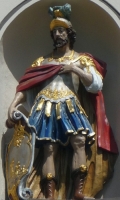St. Marinus, Vimius, & Zimius
Feastday: June 12
The "Three Holy Exiles' They were Benedictines at the Scottish St. James Abbey in Regensburg, Germany. They became hermits at Griestatten.
St. Ampliatus
Feastday: June 12
Death: 1st century
Bishop and martyr, mentioned by St. Paul with Sts. Narcissus and Urban. Ampliatus is reported to have had the rank of bishop, joining St. Andrew in missionary labors in the Balkans. Ampliatus was martyred there with Sts. Narcissus and Urban.
Stachys, Amplias, Urban (Menologion of Basil II)
Ampliatus (Amplias in the King James Version), was a Roman Christian mentioned by Paul in one of his letters, where he says, "Greet Ampliatus, whom I love in the Lord." (Romans 16:8) He is considered one of the Seventy Disciples by the Eastern Orthodox Church. He may have served as bishop of Odessos (Varna), in Bulgaria.[1] He is commemorated in the Roman Martyrology on Oct31
St. John of Sahagun
Feastday: June 12
Birth: 1419
Death: 1479
John Gonzales de Castrillo was born at Sahagun, Leon Spain. He was educated by the Benedictine monks of Fagondez monastery there and when twenty, received a canonry from the bishop of Burgos, though he already had several benefices. He was ordained in 1445; concerned about the evil of pluralism, he resigned all his benefices except that of St. Agatha in Burgos. He spent the next four years studying at the University of Salamanca and then began to preach. In the next decade he achieved a great reputation as a preacher and spiritual director, but after recovering after a serious operation, became an Augustinian friar in 1463 and was professed the following year. He served as master of novices, definitor, prior at Salamanca, experienced visions, was famous for his miracles, and had the gift of reading men's souls. He denounced evil in high places and several attempts were made on his life. He died at Sahagun on June 11, reportedly poisoned by the mistress of a man he had convinced to leave her. He was canonized in 1690 as St. John of Sahagun. His feast day is June 12th.
John of Sahagún, O.E.S.A. (Spanish: Juan de Sahagún), (24 June 1419 – 11 June 1479) was a Spanish Augustinian friar and priest. He was a leading preacher regarding social behavior of his day. He was declared a saint by the Catholic Church in 1690 by Pope Alexander VIII.
Life
John was born in the year 1419, at Sahagún (or San Facondo) in the Province of Leon. He was the oldest of the seven children of Juan González del Castrillo and Sancha Martínez, a wealthy family of the city.
González received his early education from the monks of the Royal Monastery of St. Benedict in his native city, a leading religious and educational center in the region known as the Cluny of Spain. He received the tonsure while still a youth, according to the custom of the times, after which his father procured for him the benefice of the neighboring parish of Tornillo. He was later introduced to Alfonso de Cartagena, the Bishop of Burgos (1435–1456), who was impressed by the bright, high-spirited boy. Cartagena had him educated at his own residence, gave him several prebends, ordained him a priest in the year 1445, and made him a canon at the Cathedral of Burgos.
Possessing all of these offices simultaneously caused González many qualms of conscience, as it was contrary to Church law. He soon resigned all, retaining only that of the Chapel of St. Agatha in a poor neighborhood of the city, where he said Mass, and preached the faith to the poor.[1] He then began to lead a life of strict poverty and mortification.[2]
With his bishop's consent, González obtained permission to enter the University of Salamanca, where for four years he applied himself to the study of theology. During this time he exercised the ministry at the chapel of the College of St. Bartholomew (in the Parish of St Sebastian), and held that position for nine years. He devoted himself to pastoral care. Owing to illness, he was obliged to undergo an operation for the removal of kidney stones. He vowed that if his life were spared, he would become a Religious.
Upon his recovery in the year 1463, González applied for admission to the Order of Hermits of St. Augustine, at the Monastery of St. Peter, from that point on, being known simply as Brother (or Friar) John. In the following year, on August 28, 1464, John made his profession of solemn vows as a member of the Order.[3]
By the command of his superiors, John gave himself wholeheartedly to the salvation of souls, and with the best results, to preaching the "Word of God." By his zeal he was able to effect the entire reformation of the city of Salamanca.[4]
John made such progress in religious perfection that he was soon appointed master of novices, and later in the year 1471, prior of the community. He conducted the Religious under his rule more by example than by his words.
Great was St John's devotion to the Blessed Sacrament, that at the celebration of Mass he frequently saw the Sacred Host resplendent in glory. He was gifted with a special power to penetrate the secrets of conscience, so that it was not easy to deceive him, and sinners were almost always forced to make good confessions. He was able to obtain wonderful results in doing away with enmities and feuds.
In many ways, John was like a fellow Religious who lived nearly 500 years later, Pio of Pietrelcina, who also had the uncanny ability to discern the secrets of conscience.
In his sermons, John preached the Word of God and scourged the crimes and vices of the day, by which the rich and noble were offended. He soon made many enemies, who went so far as to hire assassins, but these, awed by the serenity and angelic sweetness of his countenance, lost courage. Some women of Salamanca, embittered by the saint's strong sermon against extravagance in dress, openly insulted him in the streets and pelted him with stones until stopped by a patrol of guards.
John's scathing words on the "sins of impurity" produced salutary effects in a certain nobleman who had been living in open concubinage, but the woman swore vengeance. It was popularly believed that she had caused the saint's death by poison (this statement is found only in later biographies).
John died on 11 June 1479, in his monastery. His remains were buried in the Old Cathedral of the city.
Veneration
Soon after John's death, his "cult" spread throughout Spain. The process of beatification began in 1525 under Pope Clement VII, and in 1601 he was declared "Blessed" by Pope Clement VIII.
New miracles were wrought through his intercession, and on 16 October 1690 Pope Alexander VIII canonized him. In 1729 Pope Benedict XIII inscribed his liturgical feast day in the Roman Calendar for 12 June, since 11 June, the anniversary of his death was occupied by the feast of Saint Barnabas. In the 1969 revision of the Roman liturgical celebration was left to local calendars because of the limited importance attributed to him on a universal level.[5] In the Roman Martyrology, the official list of saints of the Catholic Church, his feast day is 11 June.[6]
John's life written by John of Seville towards the end of the fifteenth century with additions in 1605 and 1619, is the one used by the Bollandists in "Acta SS.", June, III, 112.
In art, John is represented holding a chalice and Holy host surrounded by rays of light.
Blessed Maria Candida of the Eucharist
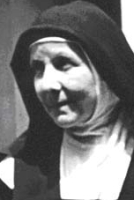
Also known as
• Maria Barba
• Maria Candida dell'Eucharistia
Profile
Daughter of Pietro Barba, an appelate court judge. Raised in Palermo, Sicily. She made her first Communion at age 10, and had an intense devotion to the Eucharist from a very early age. At fifteen she felt a call to religious life, but her family, though pious, opposed her vocation. She was 35 when she was able to follow the call, and she entered the Discalced Teresian Carmel at Ragusa, Italy on 25 September 1919, taking the name Maria Candida of the Eucharist. Eucharistic devotion dominated her spiritual life, and she would spend hours before the Host. Prioress of her house from 1924 to 1947. Greatly expanded the Carmel in Sicily, and promoted devotion to Saint Teresa of Jesus and her Rule within her Order. Wrote a small book titled The Eucharist, a description of her experiences and theological meditations on them.
Born
16 January 1884 in Catazaro, Italy as Maria Barba
Died
12 June 1949 of natural causes
Beatified
21 March 2004 by Pope John Paul II
Saint Gaspare Bertoni

Also known as
• Caspar Bertoni
• Gaspar Bertoni
• The Apostolic Missionary
Profile
Son of Francis, a wealthy lawyer and notary, and Brunora Ravelli Bertoni, he was raised in a pious family. His beloved sister died when Gaspare was quite young. He was educated at home, then by Jesuits and the Marian Congregation at Saint Sebastian's School in Verona, Italy.
At his first Communion Gaspare received a vision and message that he was to become a priest, and he entered the seminary in 1796. On 1 June 1796, troops from Revolutionary France began a 20 year occupation of northern Italy. Gaspar joined the Gospel Fraternity for Hospitals, and worked to help those wounded, ill, displaced, or otherwise harmed by the occupation. Ordained on 20 September 1800.
Chaplain to the sisters of Saint Magdalen Canossa convent. Spiritual director to many including Blessed Leopoldina Naudet, Venerable Teodora Campestrini, and an entire seminary. Well known preacher. One of the leaders in a Europe-wide movement to offer prayers and support for Pope Pius VII when he was imprisoned by Napolean Bonaparte. Established the Marian Oratories. Organized free schools for the poor. Spread devotion to the Five Wounds of Christ.
Founded the Congregation of the Sacred Stigmata of Our Lord Jesus Christ (Stigmatines) on 4 November 1816. Their mission was to serve as "Apostolic Missionaries for the assistance of bishops", and they were under the patronage of Mary and Joseph.
Beset by fevers and a continuing infection in his right leg during the last two decades of his life. Over 300 operations were performed on his leg in an effort to stem the infection. Continued to serve as counselor and spiritual director from his hospital bed.
Born
9 October 1777 in Verona, Italy
Died
Sunday 12 June 1853 in Verona, Italy of natural causes
Canonized
1 November 1989 by Pope John Paul II
Blessed Lorenzo Salvi
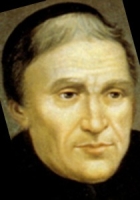
Also known as
Lorenzo Maria of Saint Francis Xavier
Profile
Studied at the Collegio Romano in Rome, Italy; his classmates included Saint Gaspare del Bufalo and the future Pope Gregory XVI. Influenced by the work and preaching of Saint Vincent Mary Strambi. Became a Passionist novice at Monte Argentario in 1801, and made his profession on 20 November 1802. Ordained on 29 December 1805. For seven years the house and all the religious in it were suppressed by order of Napoleon. When Lorenzo was able to return to his vocation, he devoted himself to preaching missions and promoting devotion to the Passion. Showed a great personal devotion to the Child Jesus. Rector of the Passionist Generalate in Rome (his vice-rector was Blessed Dominic Barberi), but spent nearly every day on the road preaching missions.
Born
30 October 1782 in Rome, Italy
Died
• 12 June 1856 in Capranica, Viterbo, Italy of natural causes
• buried in the Passionist Church of Saint Angelo, Vetralla, Viterbo
Beatified
1 October 1989 by Pope John Paul II
Pope Saint Leo III
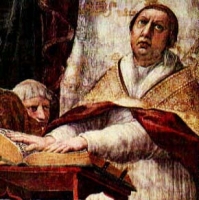
Also known as
Charlemagne's Pope
Profile
The son of Atyuppius and Elizabeth. Priest. Cardinal. Papal treasurer. Elected pope the day after his predecessor's burial, probably so there would not be any outside interference with the decision of the cardinals.
Upon his election, he sent Charlemagne the keys of Saint Peter and the standard of the city of Rome, Italy indicating his choice of Charlemagne as protector of the city and the see. Charlemagne, with his letters of congratulations, sent a fortune which Leo used to build churches and found charitable institutions.
On 25 April 799, members of Pope Adrian I's family hired thugs to attack Leo in a procession. They scarred his face and tried to tear out his toungue and eyes to render him unfit for the papacy. He survived the attack, scarred but tongue and eyes miraculously healed. He fled to Charlemagne's protection at Paderborn, Germany where his enemies tried to turn the king against him. When Leo recovered, Charlemagne escorted him back to Rome. In 800 he conducted a trial of Leo and of his accusers. There was no evidence of Leo's guilt, but there was of his accusers, and they were imprisoned. On Christmas day in 800, Leo crowned Charlemagne emperor, marking the beginning of the Holy Roman Empire.
Born
at Rome, Italy
Papal Ascension
26 December 795
Died
• 12 June 816
• relics at Saint Peter's, Rome, Italy
Canonized
1673 by Pope Clement X
Saint Onuphrius
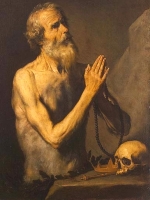
Also known as
• Onuphrius of Egypt
• Onuphrius the Great
• Humphrey, Onofre, Onofrio, Onophry, Onouphrius
Profile
Hermit for 70 years in the desert near Thebais, Upper Egypt. He sought to imitate the solitude and privations of Saint John the Baptist, and lived on the the fruits of a date tree and a palm-tree that grew near his cell. Popular in the Middle Ages, initially with monks and then in general, he became associated with weavers because he was depicted "dressed only in his own abundant hair, and a loin-cloth of leaves".
Died
• c.400
• buried by Saint Paphnutius who had come to him to learn if the hermit's life was for him
• Paphnutius buried Onuphrius in a hole in the mountainside; the hole immediately disappeared
Patronage
• weavers
• Centrache, Catanzaro, Italy
Blessed Antonia Maria Verna
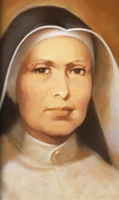
Profile
Antonia early felt a call to religious life, and as a teenager began caring for and catechising children in her village. Attended the Institute in San Giorgio Canavese, simultaneously a student and a teacher. In 1806, she and several companions formed a group that would become the Institute of the Sisters of Charity of the Immaculate Conception of Ivrea, dedicated to teaching and catechising children, and home care for the sick; in 1819 they opened their first home, on 7 March 1828 King Charles Felix gave secular approval, and on 10 June 1828 her bishop gave his approval. Antonio spent the rest of her life, and ruined her health, in leading, promoting and expanding the Institute.
Born
12 June 1773 in Pasquaro di Rivarolo Canavese, Turin, Italy
Died
• 25 December 1838 in Pasquaro di Rivarolo Canavese, Turin, Italy of natural causes
• interred in the basement of her parish church
Beatified
2 October 2011 by Pope Benedict XVI
Saint Cunera

Profile
Her legend says that she was a princess in the region of York, England. One of the holy virgins who travelled with Saint Ursula, she was saved from the massacre by the Frisian king Radboud who took her to his castle in Rhenen (in modern Netherlands) where she eventually ran the household. Queen Aldegonde became jealous, and had Cunera strangled and buried in a cattle shed. A miracle led to the discovery of the crime, which led to the conversion of Radboud to Christianity.
There are a number of problems with this story, and nothing reliable about her has survived.
Born
British Isles
Died
strangled to death on 28 October 340 in Rhenen, Netherlands
Patronage
• cattle
• throats
• Rhenen, Netherlands
Blessed Guy Vignotelli
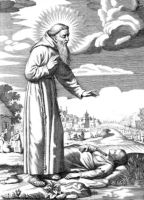
Also known as
Guy of Cortona
Profile
Wealthy layman known for his charity to the poor. After hearing a sermon by Saint Francis of Assisi, he gave away the rest of his riches and became a Franciscan tertiary, received into the order by Saint Francis himself in 1211. Priest. Hermit near Cortona, Italy living in a cell on a bridge. Miracle worker.
Born
c.1185 at Cortona, Italy
Died
• 1245 at the Franciscan convent at Cortona, Italy of natural causes
• on his death-bed he had a vision of Saint Francis coming to lead him to the next life
Beatified
1583 by Pope Gregory XIII (cultus confirmation)
Saint Odulph of Utrecht
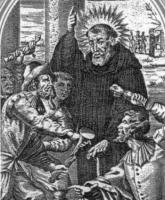
Also known as
Odulfo, Odulphus
Profile
French nobility. Pious and studious youth. Augustinian priest. Curate of Oresscoth in Brabant. Worked with Saint Frederick of Utrecht to evangelize the Frisons. Canon of the cathedral at Utrecht, Netherlands where he worked to set a good example of prayer and fasting to laymen. Founded the Augustinian monastery at Stavoren.
Born
Brabant (in modern Belgium)
Died
• c.855 of natural causes
• relics stolen in 1034
• relics turned up in London, England, and were interred at Evesham Abbey
Blessed Mercedes Molina Ayala
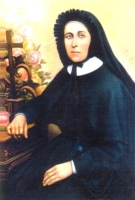
Also known as
Mercedes of Jesus
Profile
Nun in 1873. Founded the Institute of the Sisters of Saint Mariana of Jesus(Marianitas Sisters) to care for and educate orphans and poor girls, and to help prostitutes escape the life.
Born
1828 in Baba, Los Ríos, Ecuador as Mercedes Molina
Died
12 June 1883 in Riobamba, Chimborazo, Ecuador of natural causes
Beatified
1 February 1985 by Pope John Paul II in Guayaquil, Ecuador
Blessed Conrad of Maleville
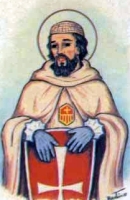
Also known as
Corrado
Profile
Born to the French nobility. Mercedarian knight. In 1300 he ransomed 228 Christians enslaved in Tunis, Tunisia by Muslim raiders. Returning to France, he was sent to Algiers, Algeria where he ransomed 218 more.
Born
France
Died
1310 in the Mercedarian convent of Sainta Maria in Avignon, France of natural causes
Saint Amphion of Nicomedia
Profile
Priest during the reign of Valerius Maximianus Galerius. Earliest known bishop of Epiphania, Cilicia (in modern Turkey) in 325. Attended the Council of Nicaea. Bishop of Nicomedia; opposed the Arians who were just starting to spread in the area. Writer whose works were recommended by Saint Athanasius of Alexandria for their defense of the faith. Suffered in the persecutions of Diocletian.
Died
early 4th century of natural causes
Saint Peter of Mount Athos
Profile
First hermit on Mount Athos in 8th century Greece.
Legend says that he was a soldier captured by Muslims, but freed through the intercession of Saint Simeon. He made a pilgrimage to Rome, Italy and was given a monastic habit by the (unnamed) pope. Moved by a vision of the Blessed Virgin Mary, he became a hermit for 50 years on Mount Athos, fighting off assaults of the devil and starting a tradition for other hermits to follow.
Saint Eskil

Also known as
Aeschilus, Aeschylus, Eskill, Eskillo, Eschillo
Profile
Missionary, working in Sweden with Saint Ansgar. Bishop. He converted so many pagan Swedes to Christianity that he was condemned to death by King Swerker the Bloody. Martyr.
Born
in England
Died
stoned to death on Good Friday 1131
Saint Arsenius of Konev
Profile
Monk on Mount Athos in Greece for three years. Monk at the Valaam monastery in northern Russia. Founded a monastery in the island of Konev, putting it under the Rule he had learned on Mount Athos.
Born
Novgorod, Russia
Died
1447 of natural causes
Saint Chrodobald of Marchiennes
Also known as
Chlodobald, Chrodobalde, Ludbald, Rodebald
Profile
Spiritual student of Saint Amandus of Belgium. Benedictine monk at the monastery of Elnone (modern Saint-Amand-les-Eaux) in Tournai, Flanders (in modern Belgium). Provost of the abbey of Marchiennes near Douai, France.
Born
Gaul (modern France)
Died
7th century
Saint Lochinia of Ireland
Also known as
Lochin, Lochein
Profile
Born a princess, the daughter of Briga and King Conall Derg of Oriel in northern Ireland. Sister of Saint Fanchea of Rossory, Saint Carecha of Clonburren, Saint Darenia of Cashel and Saint Enda of Arran. No details of her life have survived.
Born
5th century Oriel, Ireland
Died
c.500
Saint Placid of Ocre
Profile
Born to a working class family. Became a Cistercian monk at Saint Nicholas, Corno, Italy. Lived as a hermit at Ocre in the Abruzzi region of Italy. Founder and abbot of Santo Spirito monastery near Val d'Ocre. As a self-imposed penance, he slept standing the last 37 years of his life.
Born
at Rodi, Italy
Died
1248 of natural causes
Blessed Stefan Kielman
Profile
Premonstratensian monk in 1641. Canon of the Strahov monastery outside Prague, Bohemia (modern Czech Republic). Ordained in 1647. Prior of his monastery. Spiritual director and confessor to the sisters in the Doksany convent.
Born
1622 in the area that is modern Czech Republic
Died
1678 of natural causes
Blessed Pelagia Leonti of Milazzo
Profile
Daughter of Domenico Leonti and Bernarda Maiolino; sister of Blessed Angelica of Milazzo. Franciscan Minim tertiary lay woman. Her guardian angel was sometimes visible to other people.
Born
16th century in Milazzo, Italy
Died
1591 of natural causes
Blessed Antonio de Pietra

Profile
Mercedarian friar. Ransomed 80 Christians from Muslim slavery in North Africa.
Died
1490 at San Martino convent, Oran, Algeria of natural causes
Saint Ternan of Culross
Also known as
Torannan
Profile
Fifth-century missionary bishop to the Picts in Scotland, consecrated by Saint Palladius of Ireland. He used Abernethy, Scotland as his base of operations. Founded the monastery of Culross in Fifeshire, Scotland.
Saint Cyrinus of Antwerp
Also known as
Cirino
Profile
Martyr.
Died
• Rome, Italy, date unknown
• buried in the Callistus catacombs in Rome
• relics transferred to the Jesuit college in Antwerp, Belgium in 1606
Saint Christian O'Morgair of Clogher
Also known as
Christianus, Croistan O'Morgair
Profile
Brother of Saint Malachy of Armagh. Influential bishop of Clogher, Ireland in 1126.
Died
1138
Saint Valerius of Armenia
Profile
Martyred in the persecutions of emperor Hadrian.
Born
Armenian
Died
• crucified in the early 2nd century
• relics enshrined in Gueldre, Limburg, the Netherlands
Saint Olympus of Aenos
Profile
Bishop of Aenos, Rumelia (modern Enez, Turkey). Contemporary of Saint Athansius. Strongly opposed Arianism, and was driven from his diocese by the Arian emperor Constantus.
Died
343 of natural causes
Saint Galen of Armenia
Profile
Martyred in the persecutions of emperor Hadrian.
Born
Armenian
Died
• crucified in the early 2nd century
• relics enshrined in Gueldre, Limburg, the Netherlands
Saint Gerebald of Chalons
Profile
Bishop of Chalons-sur-Seine, France in 864; he served the last 21 years of his life.
Died
885 of natural causes
Saint Cuniald
Profile
Seventh century confessor of the faith. No details about him have survived.
Saint Cominus
Profile
Fifth-century monk and abbot.
Patronage
Ardcavan, Ireland
Saint Geslar
Profile
Seventh century confessor of the faith. No details about him have survived.
Martyrs of Bologna
Profile
Three Christians who were martyred at different times and places, but whose relics have been collected and enshrined together - Celsus, Dionysius, andMarcellinus
Died
relics enshrined in churches in Bologna and Rome in Italy
Martyrs of Rome
Profile
Four members of the Imperial Roman nobility. They were all soldiers, one or more may have been officers, and all were martyred in the persecutions of Diocletian - Basilides, Cyrinus, Naborand Nazarius.
Died
• 304 outside Rome, Italy
• buried along the Aurelian Way
Three Holy Exiles
Profile
Three Christian men who became Benedictine monks at the Saint James Abbey in Regensburg, Germany, then hermits at Griestatten, and whose lives and piety are celebrated together. - Marinus,Vimius and Zimius.
108 Martyrs of World War II
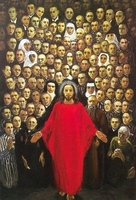
Also known as
• Polish Martyrs
• 108 Polish Martyrs of the Nazis
• 108 Blessed Polish Martyrs
Profile
Among the millions murdered by Nazis in World War II, many were Poles killed for being Poles, and many were Catholics killed for being Catholic. As emblematic of this group, 108 Polish Catholics who were murdered for their faith, and whose faithfulness was attested by by witnesses, were beatified as a group of by Pope John Paul II. They each have a separate memorial day on the calendar, and a separate profile in this system, and will appear on the appropriate pages as the calendar rolls around, but they are celebrated as a group today.
• Adalbert Nierychlewski • Adam Bargielski• Aleksy Sobaszek • Alfons Maria Mazurek• Alicja Maria Jadwiga Kotowska • Alojzy Liguda • Anastazy Jakub Pankiewicz • Anicet Koplinski • Antoni Beszta-Borowski• Antoni Julian Nowowiejski • Antoni Leszczewicz • Antoni Rewera • Antoni Swiadek •
Died
between 5 October 1939 and April 1945 in Germany and Nazi-occupied Poland
Beatified
13 June 1999 by Pope John Paul II in Warsaw, Poland
இன்றைய புனிதர் :
(12-06-2021)
அருளாளர் யோலந்தா (Blessed Yolanda)
பிறப்பு : கி.பி. 1235
எஸ்டர்காம், போலந்து
(Esztergom)
✠இறப்பு : கி.பி. 1298
க்நீஸ்னோ
(Gniezno)
✠அருளாளர் பட்டம் : கி.பி. 1827
திருத்தந்தை 12ம் லியோ
(Pope Leo XII)
✠நினைவுத் திருநாள் : ஜூன் 12
அருளாளர் யோலந்தா, ஹங்கேரியின் அரசர் "நான்காம் பேலா" மற்றும் "மரிய லஸ்கரினா" (King B�la IV of Hungary and Maria Laskarina) ஆகியோரின் மகளாவார். இவர், "புனிதர் ஹங்கேரியின் மார்கரெட்" (Saint Margaret of Hungary) மற்றும் "புனிதர் "கிங்கா" (Saint Kinga (Cunegunda) ஆகியோரின் சகோதரியுமாவார். புகழ்பெற்ற ஃபிரான்சிஸ்கன் "புனிதர் ஹங்கேரியின் எலிசபெத்" (Elizabeth of Hungary) இவரது தந்தை வழி அத்தை ஆவார்.
போலந்து நாட்டின் பிரபுவைத் திருமணம் செய்திருந்த யோலந்தாவின் தமக்கை கிங்காவின் மேற்பார்வையில் கல்வி கற்பதற்காக யோலந்தா போலந்து அனுப்பப்பட்டார். அங்கே, அவர் "போலஸ்லா" (Bolesław the Pious) என்பவரைத் திருமணம் செய்ய அறிவுறுத்தப்பட்டார். 1257ம் ஆண்டு, அவர்களது திருமணம் நடந்தது. அவர்களுக்கு பின்வரும் மூன்று பெண்குழந்தைகள் பிறந்தன:
1. 1263ம் ஆண்டு, பிறந்த எலிசபெத் (Elisabeth of Kalisz) (இவர் பின்னாளில் "லெக்னிகா�வின்" பிரபு "ஹென்றி" (Henry V, Duke of Legnica) என்பவரை திருமணம் செய்துகொண்டார்.)
2. 1266ம் ஆண்டு, பிறந்த ஹெட்விக் (Hedwig of Kalisz) (இவர் பின்னாளில் போலந்தின் மன்னன் "முதலாம் விளாடிஸ்லாவ்" (Władysław I the Elbow-high, King of Poland) என்பவரை திருமணம் செய்துகொண்டார்.)
3. 1278ம் ஆண்டு, பிறந்த அன்னா (Anna of Kalisz) (இவர் பின்னாளில் "க்நீஸ்னோ" நகரில் அருட்சகோதரியாக (Nun in Gniezno) துறவறம் பெற்றார்.)
யோலந்தா, தமது திருமணத்தின்போதே எதிர்காலத்தில் ஏழைகளுக்கும் வீடற்றவர்களுக்கும் உதவும் எண்ணம் கொண்டார். இதற்கு அவரது கணவரான "போல்ஸ்லா"வும் துணை நின்றார். அதன் காரணமாகவே அவருக்கு "நல்லோர்" (The Pious) எனும் பட்டப்பெயரும் கிடைத்தது.
"சண்டேஸ்" (Sandez) என்னுமிடத்தில் யோலந்தாவின் தமக்கை கிங்கா, ஏழைகளுக்கான (Poor Clare monastery) துறவு மடம் ஒன்றினை நிறுவினார்.
1279ம் ஆண்டு, யோலந்தாவின் கணவர் "போல்ஸ்லா" மரணமடைந்தார். விதவையான யோலந்தா, தமது பெண்களில் ஒருவரான அன்னாவுடன் (Anna) இணைந்து தமக்கையின் "ஏழை கிளாரா" (Poor Clare monastery) என்ற துறவு மடத்தினை நிர்வகிக்க ஆரம்பித்தார். ஆனால், அங்கே நடந்த ஆயுதப் போரின் காரணமாக துறவு மடத்தை அங்கிருந்து அகற்ற வற்புறுத்தப்பட்டார்கள்.
யோலந்தா "க்நீஸ்னோ" (Gniezno) என்னுமிடத்தில் புதிய துறவு மடம் ஒன்றினை நிறுவினார். 63 வயதான யோலந்தா, 1298ம் ஆண்டு, மரணமடைந்தார்.


